Valpolicella Wine Tours
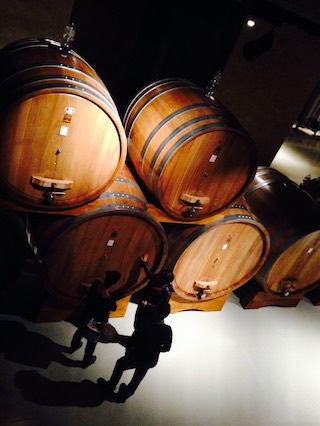 Only
30 minutes drive from Verona, Valpolicella is
one of the most famous and prestigious wine producing region in
Italy, renowned not only for the Amarone,
but also for wines such as Ripasso and the sweet
Recioto.
Only
30 minutes drive from Verona, Valpolicella is
one of the most famous and prestigious wine producing region in
Italy, renowned not only for the Amarone,
but also for wines such as Ripasso and the sweet
Recioto.
Our Verona tourist guides group is focused on small
parties, tailor made private tours in
Valpolicella. We can organize half day or all
day tours including English speaking
guide, booking at wineries, wine shipping, etc.
With a winery tour in Valpolicella you will not only deepen your
knowledge of Ripasso and Amarone
wines but you will also discover the whole territory with its
history and the tasty traditional cuisine served in many local
restaurants.
Here you find a selection of themes and itineraries you can book
or use to get inspiration for a customized wine tour.
Do not hesitate to contact us for further information:
Wineries and Itineraries
- Family Estates. In family owned smaller cellars you can often find amazing wines and the warmest hospitality.
- Historical Cellars. The centuries old and traditional estates of Valpolicella.
- Villa Wineries. A tour of the wineries inside gorgeous Renaissance and baroque style villas.
- Top Cellars. A selection of top rated wineries by Italian and international wine guides and magazines.
- Innovative wineries. Valpolicella is not just about tradition. Few wineries are also applying modern approach to wine making inside cellars of very modern design.
- Organic Farming. For those who love organic and biodynamic wine making here is a selection of the best natural wineries in Valpolicella.
- Bike Tours. Visit wineries and the beautiful rolling hills of Valpolicella on a comfortable and ecological electric bicycle.
- Wine Hiking. Walk off road paths through hills and valleys, across terraced vineyards, olive groves, rural hamlets and woods, stopping at wineries along the road for a tasting of wines and local food.
The History
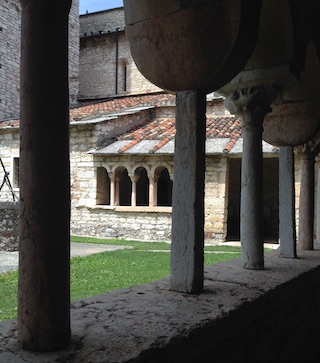 Among
the many theories about the origin of the name Valpolicella, we
love to believe what some historians think, that it comes from the
Latin words vallis poli cellae,
literally valley of many cellars. Whether it is true or not, the
wine making tradition in Valpolicella goes back to the Roman age.
Among
the many theories about the origin of the name Valpolicella, we
love to believe what some historians think, that it comes from the
Latin words vallis poli cellae,
literally valley of many cellars. Whether it is true or not, the
wine making tradition in Valpolicella goes back to the Roman age.
The presence of man since prehistoric ages, wine making and rural
activities contributed to the shaping of a beautiful landscape
with its terracing of marogne, typical
walls made of raw stone and the pergola,
the traditional vine growing method that creates
a sort of canopy. Valpolicella is a territory not only rich in
great wines, but also in history and art with its Roman
ruins, middle age rural churches such
as San Giorgio and San Floriano, gorgeous noble family
villas like Villa Della Torre, Villa Mosconi Bertani,
Villa Rizzardi.
Valpolicella Wines
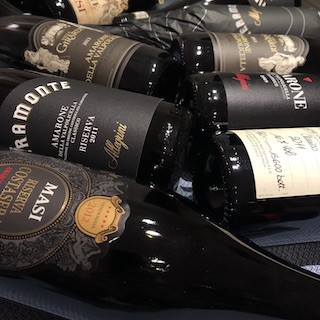 All
Valpolicella wines are made with a blend of indigenous
grapes.
All
Valpolicella wines are made with a blend of indigenous
grapes.
Corvina and Corvinone
constitute the backbone with a percentage typically between 60%
and 80%. Rondinella is the second most
important and mandatory grape varietal of the blend with
percentages between 20% and 30%. In order to create their original
flavor, wine makers are also allowed to add up to 15% of other
grapes chosen from a list of local varietals: Molinara,
Croatina, Oseletta,
Negrara, Pelara,
etc. Names you probably never heard of unless you are familiar
with Valpolicella wines.
The deep link between territory and grape varietals evolved in
many centuries in which farmers selected those vines that
perfectly adapted to Valpolicella soil and climate,
creating the uniqueness of its wines. These grapes are so
versatile that with the same blend it is possible to create five
quite different wines.
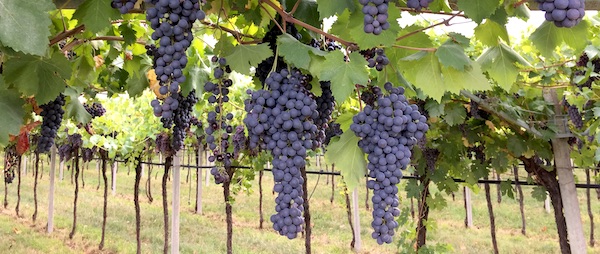
Valpolicella DOC
Made with fresh grapes crushed soon after harvest between the
second half of September and the second half of October. After a
short fermentation the wine is generally bottled although some
wineries prefer to age it for a short period of 6-12 months.
It is an easy, light, fruity, inexpensive wine,
very pleasant and easy to pair with dishes like pizza, pasta,
chicken, fresh cheese and even fish like salmon, tuna or cod.
Valpolicella Superiore
It is a medium body wine made with selected grapes. The wine is aged in wooden barrels for one or two years. It often keeps the fruitiness of lighter Valpolicella wines with a slightly higher alcohol content and structure given by the aging in oak. It is the most versatile wine of the region, easy to pair with a wide range of dishes: pasta, risotto but also red meat, grilled meat, medium aged cheese. Prices are generally affordable and for a good vintage it is possible to keep it in the cellar for up to 10 years.
Ripasso
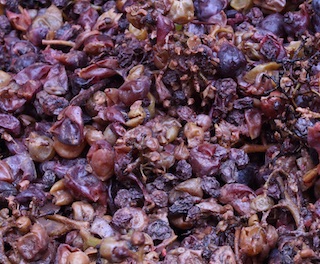 Valpolicella
Superiore wine can also be a Ripasso, a very old
and traditional wine making technique.
Valpolicella
Superiore wine can also be a Ripasso, a very old
and traditional wine making technique.
Between February and March, at the end Amarone
fermentation, the wine is put in barrels for the long
maturation. The stainless steel vats in which Amarone fermented,
are full of skins of semi-dried grapes, rich in
alcohol, flavors and a little residual sugar. These tanks
are then filled with part of the fresh Valpolicella wine made in
Autumn soon after harvest. This trigger a second, shorter
fermentation that enriches the easier Valpolicella wine with some
of the aromas of Amarone, adding color, structure, alchol. In
Italian the word "Ripasso" means to do twice, to go over
again. The process is also called double fermentation
and many wineries are developing more modern methods to obtain
Ripasso style wines. Ripasso is a wine that shares some of the
Amarone characteristics but it is easier to drink, pair with food
and usually comes at a very affordable price thus making it one of
the best selling wines of Valpolicella.
Amarone
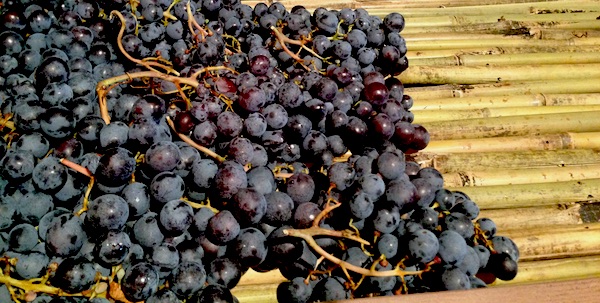
It is consider the "king" of Valpolicella wines. It is made with
a very unique wine making technique. During harvest
grapes are carefully selected among the most
ripe and loosely packed bunches and laid in one single layer on
wooden or plastic crates. These are stacked under cellars roof and
grapes air dry for the next three or four
months. In this time they loose up to 30% of water content,
concentrating sugar and developing complex and
deep aromas.
After a long and slow fermentation, Amarone is
then put in wooden barrels where it matures for a minimum of 2
years, although many wineries age it for 3, 4 and even more years.
All these procedures, together with Valpolicella wine makers
experience, give Amarone a great structure, high
alcohol content (around 15-16%), deep aromatic
complexity and smoothness, making it one of the top and most
appreciated Italian red wines.
Recioto
Even if nowadays Amarone is the most important product of
Valpolicella, the oldest and most traditional wine
in the area is actually Recioto, a dessert wine
also made with semi-dried grapes. For the
Recioto they use exactly the same grapes of Amarone, but the fermentation
is stopped before all grape sugar is transformed into
alcohol so that the resulting wine obtain a nice, well
balanced sweetness. Romans were already making a wine
very similar to Recioto two thousand years ago and the legend
has it that Amarone was born when a wine maker forgot a barrel of
sweet Recioto in the cellar, and all sugar slowly turned into
alcohol.
Even people that do not like sweet wines usually enjoy Recioto,
that counterbalance its sweetness with tannins, structure and rich
flavors.
Recioto is excellent to pair with dry pastries
like almond cookies (cantuccini) and sbrisolona
cake, a typical dessert from Verona. It is considered one of the best
pairings with chocolate, although it is perfect also
with spicy cheese like old Parmigiano,
Monte Veronese and Gorgonzola. It can also be
used as a digestive, sipped alone at the end of
a meal like you would do with a Porto wine.
IGT Wines
Valpolicella, Valpolicella Superiore, Amarone and Recioto are
all DOC and DOCG wines. In order to write these
names on labels, producers need to follow very strict
rules that concern every aspect of wine making: type of
grapes and their percentages in the blend, maximum yield per
hectare, minimum grapes drying period, minimum aging time in the
barrels, etc.
Even if this ensures that quality levels of Valpolicella wines are
always up to a certain standard, some wine makers sometimes feel a
bit constricted in their creativity and ability
to adapt to quickly changing markets and clients' taste. That is
why in recent years many wineries started to release IGT wines. An
IGT wine is a wine produced in a regulated DOC or DOCG area,
without following production rules and therefore cannot be
labelled as Valpolicella, Amarone, etc.
IGT wines are often made by blending Valpolicella traditional
grape varietal, Corvina in particular, with non
indigenous and international grapes such as Sangiovese,
Barbera, Syrah, Cabernet, etc. Typical examples of IGT wines that
few wineries are starting to produce is the 100% Corvina
grapes (Allegrini, Vogadori, Scriani, Campagnola), generally very
fruity and smooth, and the 100% Oseleta (Masi,
Zymé), rich in tannin, with a very dry structure.
Valpolicella Classica and Extended Valpolicella
Thank to the great success of Valpolicella wines all over the world, starting from the '60s, Valpolicella wine producing area has been gradually extended to include all the hills that extends over the north side of Verona province. There are now two different Valpolicella wine producing areas.
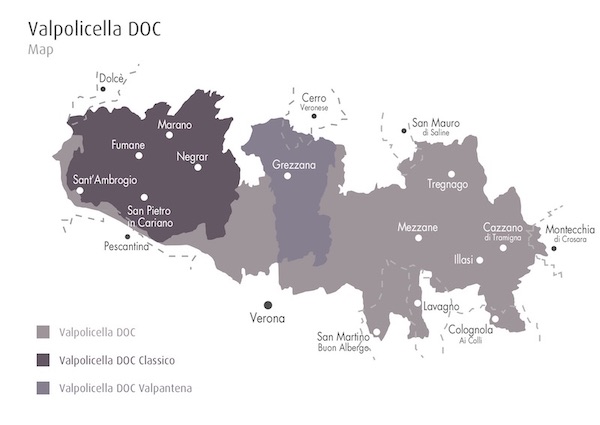
Valpolicella Classica
It is the historical and traditional wine producing area. It is a small region north-west of Verona, between the city and lake Garda. Only the wines produced in this area, around the villages of Negrar, Marano, Fumane, San Pietro Incariano and Sant'Ambrogio can be labelled Valpolicella Classica DOC. The influence of lake Garda on the micro-climate and the calcareous soil give Valpolicella Classica wines their great character.
Extended Valpolicella
It includes Valpantena, Val d'Illasi
and the territory characterized mainly by volcanic and
tufaceous soils around the villages of Cerro Veronese,
Grezzana, S. Martino, Lavagno, Mezzane, S. Mauro di Saline,
Tregnago, Illasi, Colognola ai Colli, Cazzano di Tramigna,
Montecchia di Crosara. Extended Valpolicella too is a territory
rich in history, beautiful castles
and villas. For many years wines produced in
this area have been considered of inferior quality then those
produced in the more prestigious Valpolicella Classica.
Nevertheless, in the past two decades, in order to fill the image
gap with the Valpolicella Classica many producers of Valpantena
and Val D'Illasi have improved dramatically the quality of their
wines. Nowadays Romano Dal Forno, whose Amarone
is considered the best by many, has his vineyards and winery in
the extended Valpolicella area.
Verona guides can organize wine tours both in the Classica and
extended Valpolicella wine producing areas.
Valpolicella Winery Tours
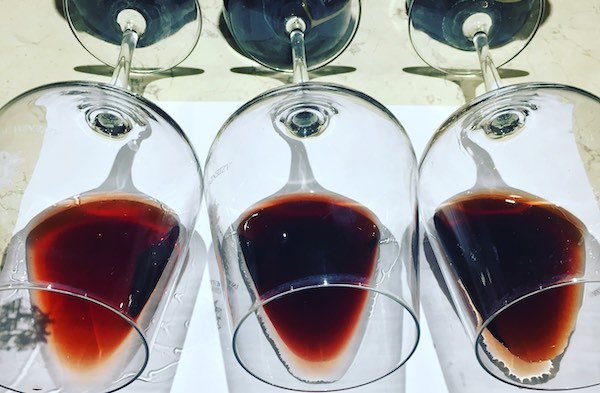
Unless there are specific requests, the typical tour includes
both old, historical and prestigious winery and smaller, family
run cellars to give an overall view on different wine making
styles.
It is also possible to organize tailor made wine tour
to include any specific winery if available on
the requested date/time.
Most wineries open 9:00-18:00 with lunch break
from 12:30 to 14:30.
Many cellars are closed on Saturday afternoon and Sunday
but it is always possible to find enough available wineries to
organize an half day tour or an all day tour although the choice
will be limited.
For any further information on itineraries in Valpolicella wineries or to book a wine tour in Verona producing areas please write at:
We only provide private tours. If you prefer to join a semiprivate or shared tour of Amarone and Valpolicella you can check here.
